It continued to be minted and circulated down to the time of Hadrian, long after the kingdom was bequeathed to Rome. It owes its name to a figure, on the obverse, of the sacred chest (cista) of Dionysus.
It was tariffed at four drachmas, but weighed only as much as three Attic drachmas (the most important weight standard of the time), 12.75 grams. In addition, the evidence of hoards suggests that it did not travel outside the area which Pergamum controlled. It is therefore suspected that it was overvalued in this area.
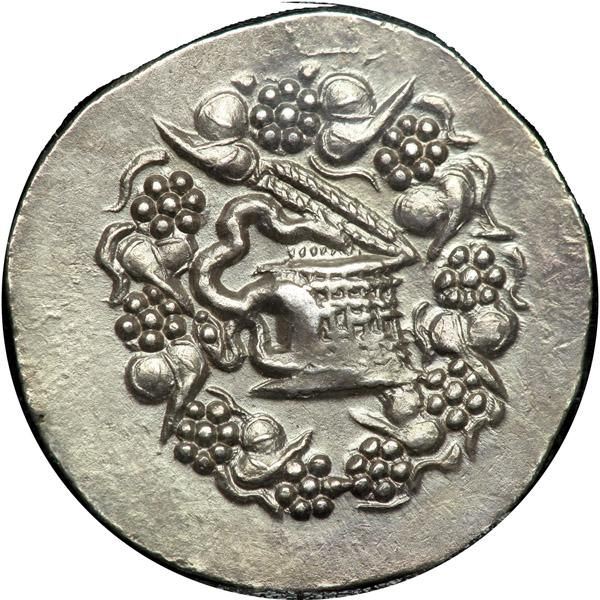
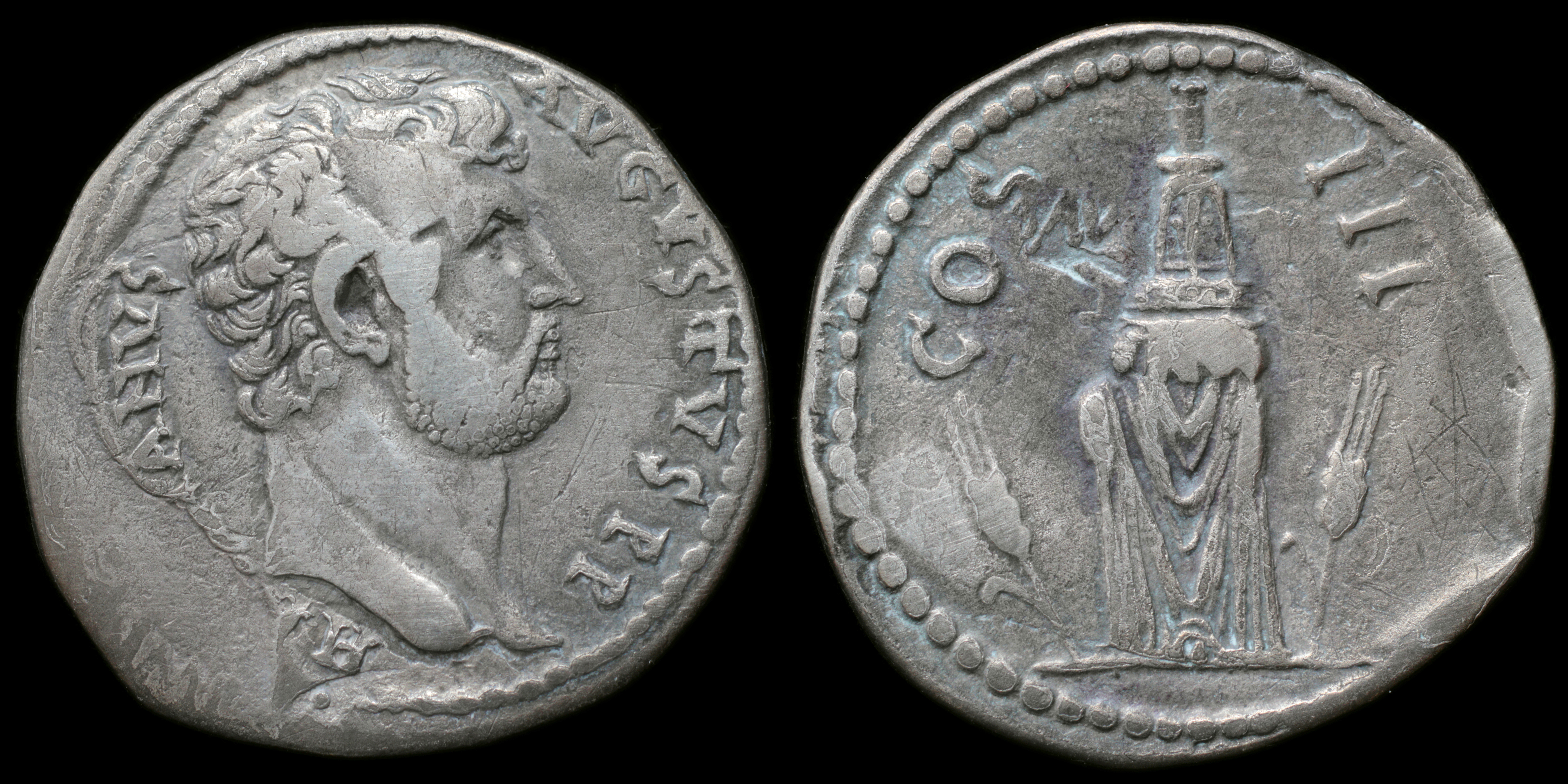
Reverse: facing cult statue of Kore, headdress with plume, stiff robe falling to feet and veil draped over wrists; grain ear on both sides; COS__III
Die Orientation: -
Weight: 10.8 g
.png)
Reverse: III•VIR• R•P•C - head of Octavia atop cista mystica, between twisting snakes.
Die Orientation: 12 H
Weight: 12.4 g
"Following the death of Octavia's first husband C. Claudius Marcellus in 40 BC, her marriage to Antony sought to seal the Pact of Brundisium in which it had been agreed that Octavian would assume control of the west and Antony of the east. The striking of this type cements the agreement before the people of Ephesus, an important city, later made the capital of Asia Minor by Augustus in 27 BC. Octavia spent two winters with Antony in Athens and in 37 BC assisted in securing the Triumvirate for another 5 years at the Pact of Tarentum. Following this, Antony returned to the east and, having left Octavia behind, lived with Cleopatra VII in Egypt. Although they divorced in 32 BC, after Antony's defeat at the Battle of Actium and subsequent suicide, Octavia raised all of his surviving children by Fulvia and Cleopatra, along with her own."
Provenance: Roma Numismatics, Auction XX (29-30 October 2020), lot 373.
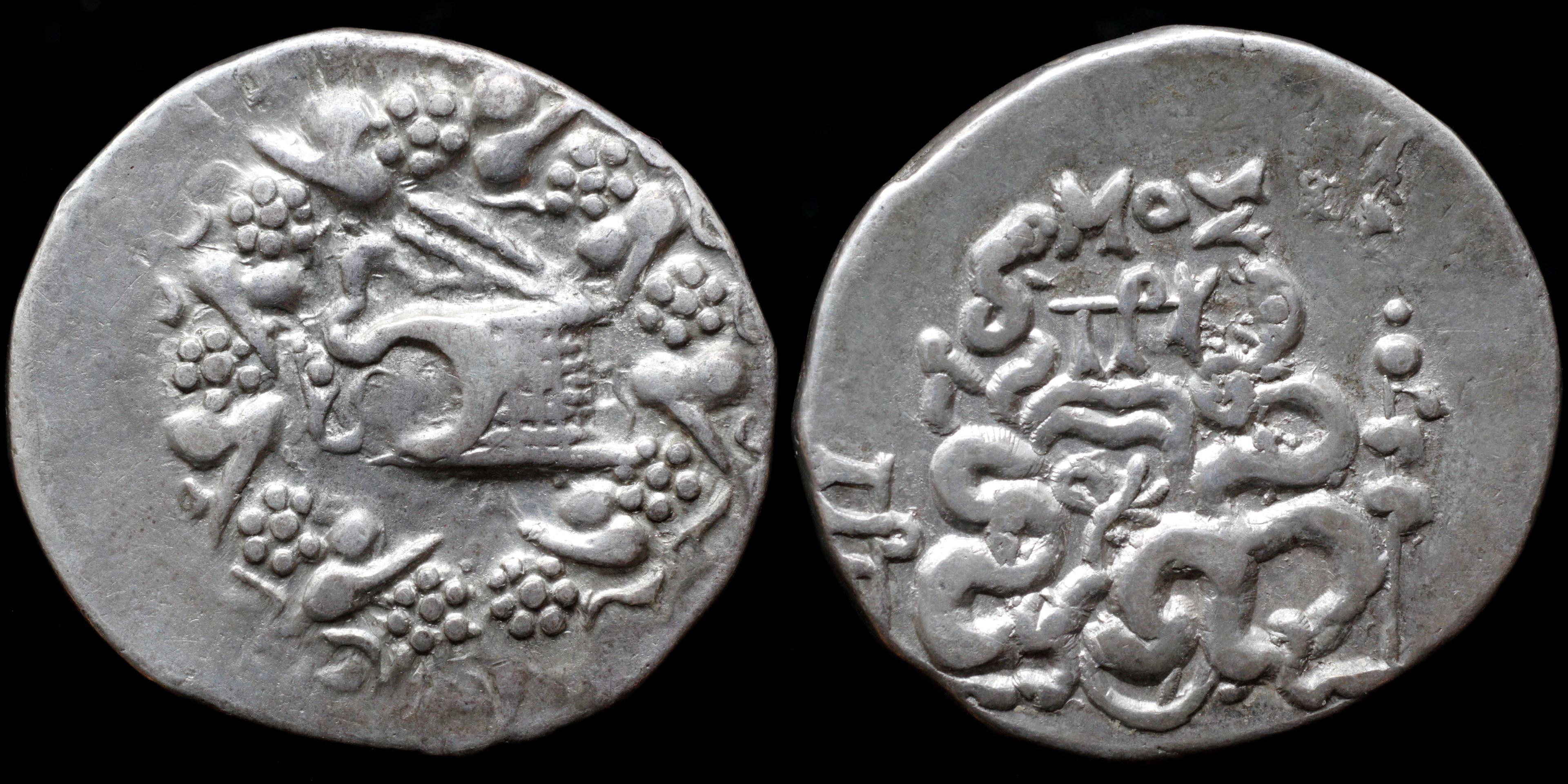
Reverse: coiled snakes, flanking ornamented bow-case, thyrsos right; MOΣ / (ΠYP) / (ΠEP)
Die Orientation: -
Weight: 12.3 g
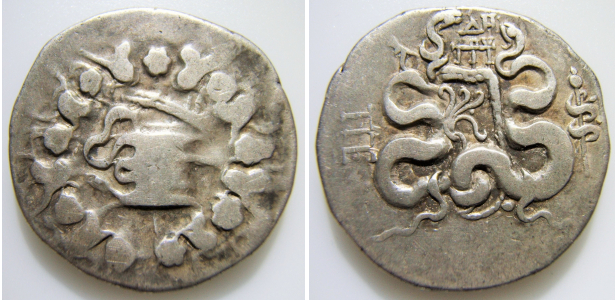
Reverse: ΩΠΓΡ / ΔH - ΩΠΓY - ΩΠΓΡ (Perganom) monogram to left of two serpents entwined around bow and bowcase. ΔH over ΩΠΓY monogram above, serpent-entwined thyrsos in right field.
Die Orientation: 11 H
Weight: 12.35 g
Ex Roma Numismatics Limited 26.08.2017. Added onto the Wildwinds Site.
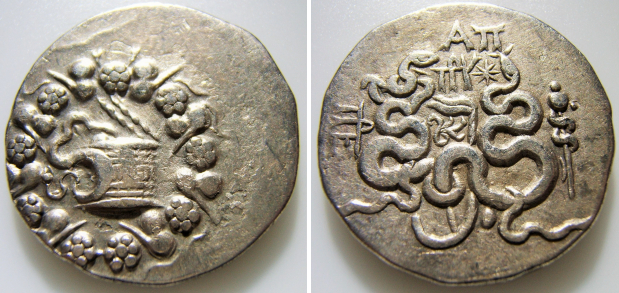
Reverse: ΠEΡΓ / AΠ / ΠΡY * - Two serpents entwined around a bow in bowcase. ΠEΡΓ monogram to left, magistrate's initials AΠ over ΠΡY monogram and star above, serpent-entwined thyrsos in right field.
Die Orientation: 12 H
Weight: 12.01 g
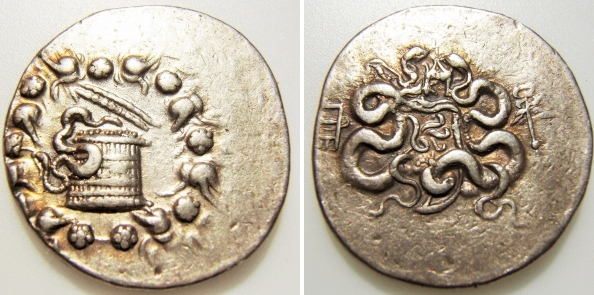
Reverse: Two coiled serpents with heads erect, between them a bow case, ornamented with an aplustre, containing a strung bow, in field to right a winged caduceus, ΠEΡ city monogram to left, and monogram between serpent heads.
Die Orientation: 12 H
Weight: 12.47 g
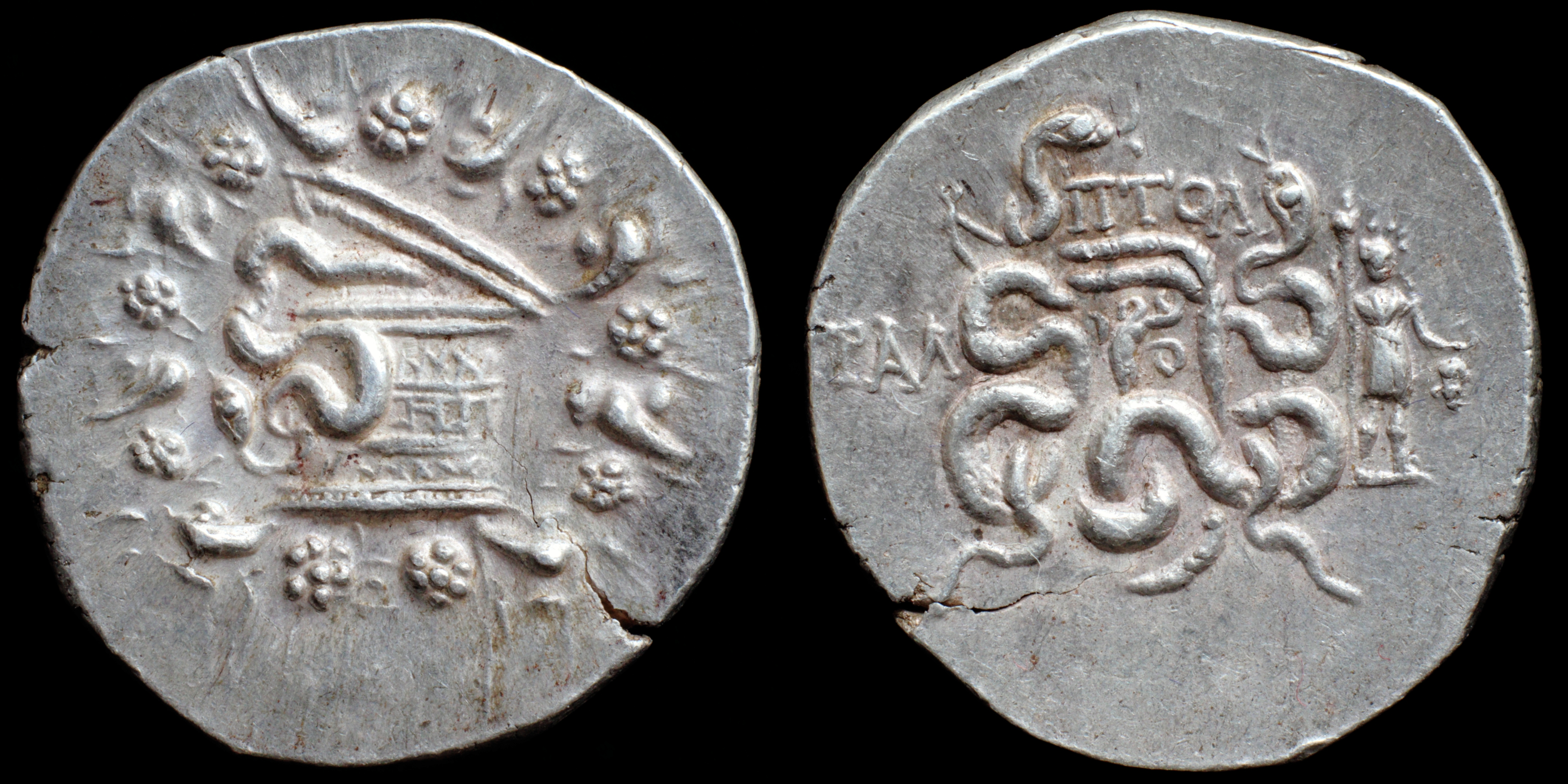
Reverse: coiled snakes, flanking ornamented bow-case; Dionysos on the right, holding thyrsos and grapes; TPAΛ / ΠTOΛ
Die Orientation: -
Weight: 12.8 g
